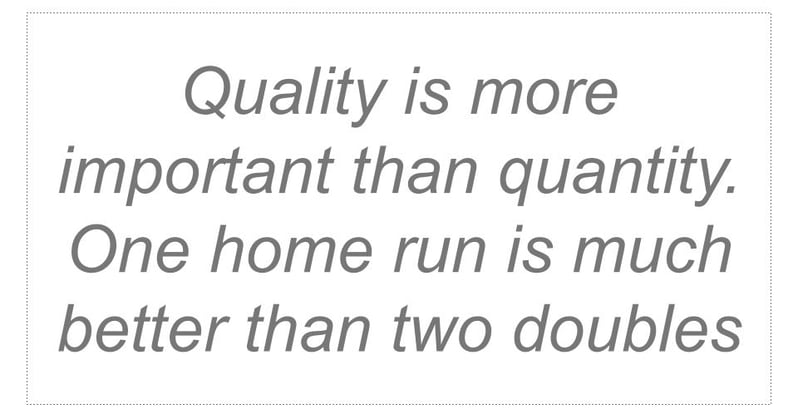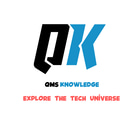Welding MCQ Questions and Answers as per AWS D1.1
These questions will focus on various topics like welding processes, qualifications, materials, design, inspection, and safety in line with AWS D1.1 standards.
WELDING


Introduction to Welding MCQs
1. What does "AWS D1.1" refer to?
A. Welding certification
B. Structural welding code for steel
C. Nondestructive testing standard
D. Metallurgy guideline
Answer: B. Structural welding code for steel
2. What is the tensile strength of E7018 electrode in AWS D1.1?
A. 70 ksi
B. 60 ksi
C. 80 ksi
D. 50 ksi
Answer: A. 70 ksi
3. In AWS D1.1, the term "PQR" stands for:
A. Procedure Qualification Report
B. Procedure Quality Report
C. Performance Qualification Report
D. Prequalified Welding Report
Answer: A. Procedure Qualification Report
4. Which material is covered under AWS D1.1?
A. Aluminum
B. Stainless steel
C. Carbon steel
D. Titanium
Answer: C. Carbon steel
5. In AWS D1.1, how is a “WPS” defined?
A. Welding Procedure Specification
B. Welding Performance Sheet
C. Welding Practice Summary
D. Welding Pipe Standards
Answer: A. Welding Procedure Specification
6. According to AWS D1.1, a welder must be requalified if they:
A. Have not welded in 6 months
B. Change job locations
C. Change to a different welding process
D. Both A and C
Answer: D. Both A and C
7. AWS D1.1 defines a fillet weld's size as:
A. The width of the weld throat
B. The leg length of the weld
C. The penetration depth
D. The length of the weld bead
Answer: B. The leg length of the weld
8. What is the recommended electrode angle for a flat position fillet weld as per AWS D1.1?
A. 45 degrees
B. 30 degrees
C. 60 degrees
D. 90 degrees
Answer: A. 45 degrees
9. AWS D1.1 covers welding of:
A. Structural steel
B. Pipe welding
C. Aerospace applications
D. Sheet metal
Answer: A. Structural steel
10. In AWS D1.1, the prequalified status of a welding procedure is based on:
A. Code provisions only
B. Experience and prior testing
C. Documentation of welding parameters and techniques
D. The size of the structure
Answer: B. Experience and prior testing
11. The AWS D1.1 code is primarily used for:
A. Design of weld joints
B. Qualification of welders
C. Inspection of welded joints
D. All of the above
Answer: D. All of the above
12. The maximum allowable root gap for a butt weld is typically:
A. 1/16 inch (1.6 mm)
B. 1/8 inch (3.2 mm)
C. 3/16 inch (4.8 mm)
D. 1/4 inch (6.4 mm)
Answer: B. 1/8 inch (3.2 mm)
13. A welding symbol with a tail indicates:
A. Required additional information
B. The length of the weld
C. The type of joint
D. The weld angle
Answer: A. Required additional information
14. What is the maximum allowable gap for fit-up between two members when performing a fillet weld in accordance with AWS D1.1?
A. 1/16 inch (1.6 mm)
B. 1/8 inch (3.2 mm)
C. 3/16 inch (4.8 mm)
D. 1/4 inch (6.4 mm)
Answer: D. 1/4 inch (6.4 mm)
15. AWS D1.1 requires welder qualification to be:
A. Based on visual inspection only
B. Renewed every 12 months
C. Process-specific
D. Universal for all processes
Answer: C. Process-specific
16. In AWS D1.1, “heat input” is primarily controlled by:
A. Voltage
B. Current
C. Travel speed
D. All of the above
Answer: D. All of the above
17. What is the primary purpose of a backing bar in AWS D1.1?
A. Preventing distortion
B. Ensuring full penetration welds
C. Reducing heat input
D. Protecting the weld from contaminants
Answer: B. Ensuring full penetration welds
18. AWS D1.1 requires bend testing for:
A. Fillet weld qualification
B. Groove weld qualification
C. Visual inspection only
D. Nondestructive testing
Answer: B. Groove weld qualification
19. In AWS D1.1, what does “FCAW” stand for?
A. Flux-Cored Arc Welding
B. Fusion-Centered Arc Welding
C. Flat-Core Arc Welding
D. Flux-Circulated Air Welding
Answer: A. Flux-Cored Arc Welding
20. Which weld joint is considered prequalified in AWS D1.1?
A. Double bevel groove weld
B. Single V-groove weld with backing
C. CJP T-joint weld
D. Fillet weld on aluminum
Answer: B. Single V-groove weld with backing
21. Which inspection method is most commonly used for surface flaws in AWS D1.1?
A. Magnetic particle inspection
B. Ultrasonic testing
C. Dye penetrant testing
D. Visual inspection
Answer: D. Visual inspection
22. What is the minimum overlap length for a fillet weld in AWS D1.1?
A. 2 inches (50 mm)
B. Twice the thickness of the thinner member
C. Four times the thickness of the thinner member
D. 1.5 times the thickness of the thinner member
Answer: B. Twice the thickness of the thinner member
23. The AWS D1.1 code specifies that a prequalified WPS must be:
A. Approved by the Engineer
B. Tested in every application
C. Filed with AWS
D. Documented and followed
Answer: D. Documented and followed
24. What is the root opening tolerance for a prequalified CJP groove weld in AWS D1.1?
A. 1/16 inch (1.6 mm)
B. 1/8 inch (3.2 mm)
C. 3/32 inch (2.4 mm)
D. 5/16 inch (7.9 mm)
Answer: B. 1/8 inch (3.2 mm)
25. In AWS D1.1, what is the definition of a “CJP” weld?
A. Complete Joint Penetration
B. Continuous Joint Process
C. Complete Joint Procedure
D. Certified Joint Plan
Answer: A. Complete Joint Penetration
26. The acceptance criteria for visual inspection of welds include:
A. Uniform bead appearance
B. No cracks
C. Proper penetration
D. All of the above
Answer: D. All of the above
27. What is the purpose of preheat as per AWS D1.1?
A. Reduce welding time
B. Increase electrode life
C. Prevent cracking
D. Improve penetration
Answer: C. Prevent cracking
28. AWS D1.1 specifies the use of low-hydrogen electrodes primarily to prevent:
A. Porosity
B. Lack of fusion
C. Hydrogen-induced cracking
D. Under bead cracking
Answer: C. Hydrogen-induced cracking
29. AWS D1.1 classifies base metals into which of the following groups?
A. Group A, Group B, Group C
B. Class 1, Class 2, Class 3
C. Group I, Group II, Group III
D. Base, Intermediate, Advanced
Answer: C. Group I, Group II, Group III
30. What is a common test used for welder qualification in AWS D1.1?
A. Tensile test
B. Impact test
C. Bend test
D. Hardness test
Answer: C. Bend test
31. What is the minimum overlap of lap joints for a weld, as per AWS D1.1?
A. 1.5 times the thickness of the plate
B. 2 times the thickness of the plate
C. 3 times the thickness of the plate
D. 4 times the thickness of the plate
Answer: B. 2 times the thickness of the plate
32. The heat-affected zone (HAZ) is important in AWS D1.1 because it:
A. Is the weld reinforcement area
B. Is prone to cracking
C. Does not affect the weld
D. Contains the filler material
Answer: B. Is prone to cracking
33. Weld profiles must be inspected to ensure:
A. Correct length and width
B. Correct fusion and penetration
C. Uniform appearance
D. Both B and C
Answer: D. Both B and C
34. According to AWS D1.1, welds that are subjected to fatigue loading must:
A. Be inspected using ultrasonic testing
B. Be preheated
C. Be made by certified welders only
D. Have smooth transitions and no undercuts
Answer: D. Have smooth transitions and no undercuts
35. AWS D1.1 specifies minimum fillet weld sizes based on:
A. Weld length
B. Plate thickness
C. Electrode size
D. Welding process used
Answer: B. Plate thickness
36. When is an ultrasonic test (UT) typically used in AWS D1.1?
A. For visual inspection
B. For fillet welds only
C. For inspecting internal defects in CJP welds
D. For inspecting surface porosity
Answer: C. For inspecting internal defects in CJP welds
37. In AWS D1.1, which welding position is designated as "1G"?
A. Flat position
B. Horizontal position
C. Vertical position
D. Overhead position
Answer: A. Flat position
38. AWS D1.1 mandates a cooling rate for welds based on:
A. The thickness of the material
B. The type of electrode
C. Environmental temperature
D. None of the above
Answer: A. The thickness of the material
39. A backing weld is used in AWS D1.1 to:
A. Provide support to thin plates
B. Ensure full penetration
C. Prevent porosity
D. Reduce welding time
Answer: B. Ensure full penetration
40. A PJP weld as per AWS D1.1 stands for:
A. Partial Joint Penetration
B. Prequalified Joint Procedure
C. Procedure for Joint Preparation
D. Permanent Joint Procedure
Answer: A. Partial Joint Penetration
